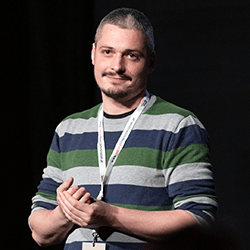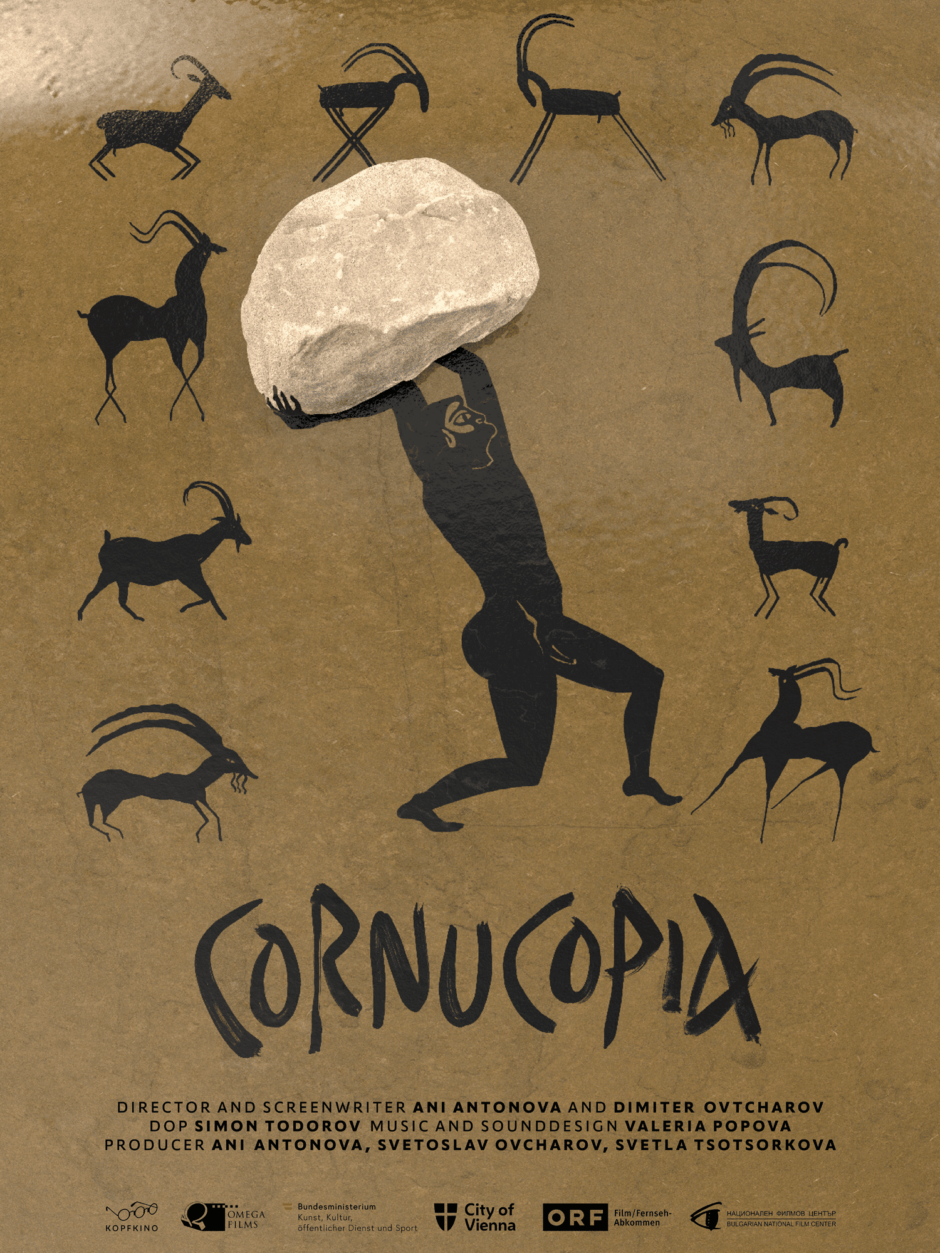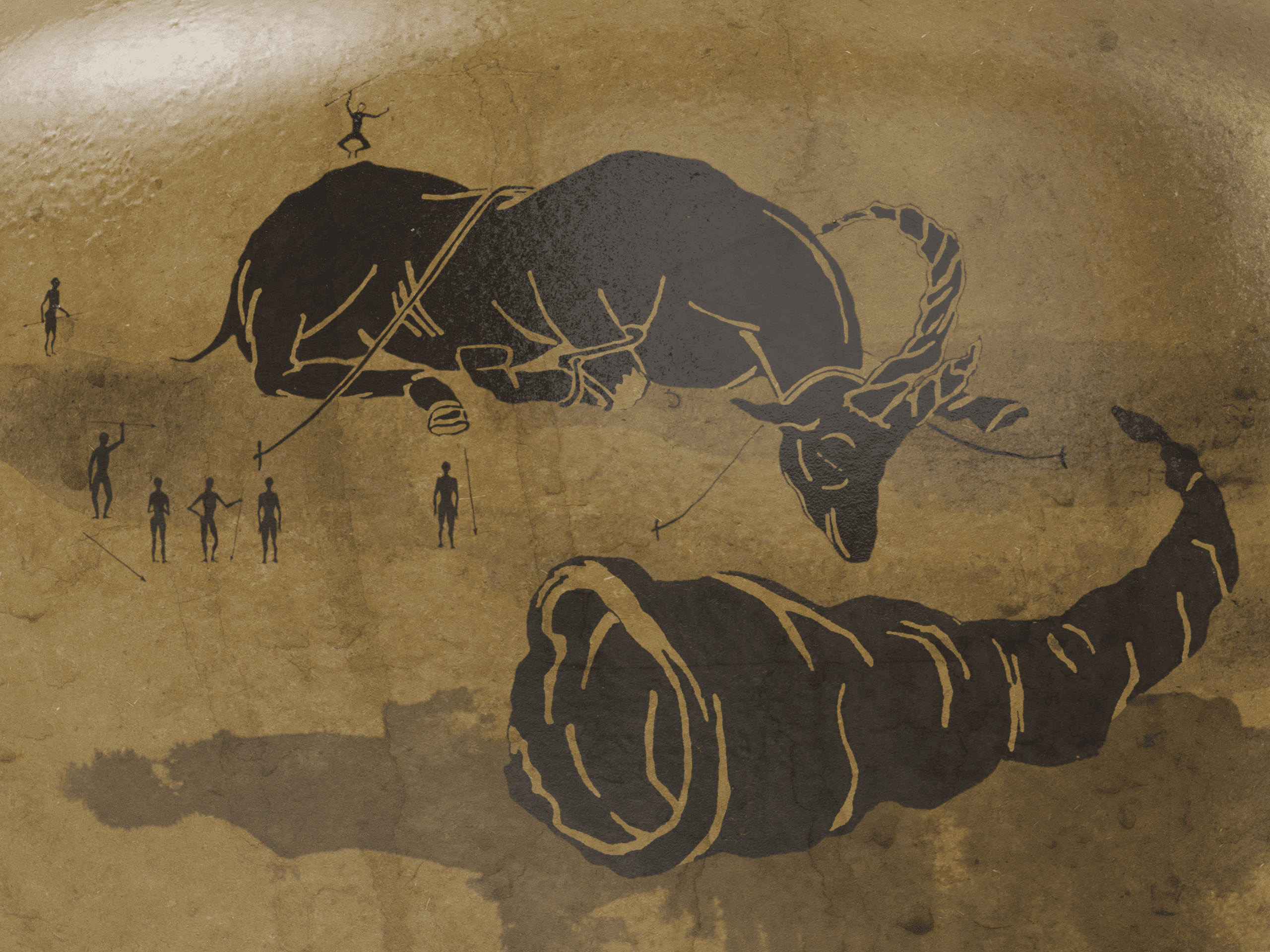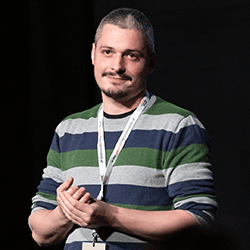Dimiter Ovtcharov is a multimedia artist living in Vienna, Austria. He works as a 2D/3D animated filmmaker, and he also loves to develop interactive animation sculptures and challenge himself to combine materials like metal, wood or stone with moving images. Dimiter shares with us how he used KeyShot while creating and directing “Cornucopia,” a unique film inspired by a 5200-year-old ‘animated’ bowl discovered in present-day Iran.

Dimiter Ovtcharov
Instagram | Website
Modeling software used: Rhinoceros
How did you get involved in animation and filmmaking?
I had the privilege to grow up on the film set and in the editing room, as my father is a film director and my mother is a film critic. Spending my preschool days watching them editing celluloid film on the old motion picture device Moviola was fascinating to me. I liked watching the filmstrip moving back or forward and how the picture was becoming alive in a small viewer that magnifies the film frame.
In university, I was surprised to discover animation was my favorite tool to express my ideas. Moreover, I was studying sculpture in the class of Erwin Wurm and expected I would rather work with a hammer or epoxy resin, than to draw frame by frame with a pen.
But one should embrace some surprises.

Can you tell us about ‘Cornucopia,’ the animated film you directed?
“Cornucopia” is the last short animation film I worked on. The film questions human insatiability and is inspired by an ancient, 5200 years old ceramic bowl, found in today’s Iran. Some say it is “the first animation” yet discovered. Seven sequential images of a goat jumping and eating the leaves of a tree are painted on the ceramic surface. If you rotate the vase – the goat becomes alive. This goat is also one of our main protagonists. Together with my animation partner Ani Antonova we decided to try a technique that was new to us: animating with Indian ink on paper. We painted frame by frame the scenes of the film, we digitized the drawings and mapped them on the surface of a 3D object using KeyShot. We were really impressed by the lifelike and crisp picture quality that KeyShot delivered. Since the film ends with a live scene with real actors, we could set the light matching the KeyShot Environment.
Where in your process do you use KeyShot?
KeyShot was almost the last step in creating our film “Cornucopia.” The digitized moving images were mapped on the surface of the 3D object and rendered in KeyShot.
It was a challenging process, mostly because of the framing. What looked perfect on the paper had, of course, some visual changes after being projected on the 3D geometry. So we had to think about it while drawing. We made some sketches we used as a helping map for the position and movement of our characters. As we wanted to tell this story using the aesthetics and alphabet of the vase paintings, KeyShot resulted as a quite fitting tool for the look we had in mind.
We decided to try a technique that was new to us: animating with Indian ink on paper. We painted frame by frame the scenes of the film, we digitized the drawings and mapped them on the surface of a 3D object using KeyShot. We were really impressed by the lifelike and crisp picture quality that KeyShot delivered.

What are some of your favorite KeyShot tools?
For that project we used mostly the Labels feature combined with geometry and camera translations and environmental rotations. So the whole Storyline is UV-mapped onto the geometry. The Performance Mode was very useful to move the mappings around, as some scenes had a lot of drawings in them. We really liked how realistic it was when the hand-drawn drawings got together with the overall structure of the vase and how the light strengthened the ceramic look. Last time we presented the animation, someone asked us where and how we filmed the animations on the vase. We did not film it, it is all rendered in KeyShot!
What advice would you give to someone interested in doing your work?
Filmmaking is a collective art. Practice and isolated hours, working on your skill are important but what I find most valuable is to meet other people and share and exchange knowledge and ideas. We should not let the competitive spirit overshadow our sense of belonging to a community of humans.
“We should not let the competitive spirit overshadow our sense of belonging to a community of humans.”



